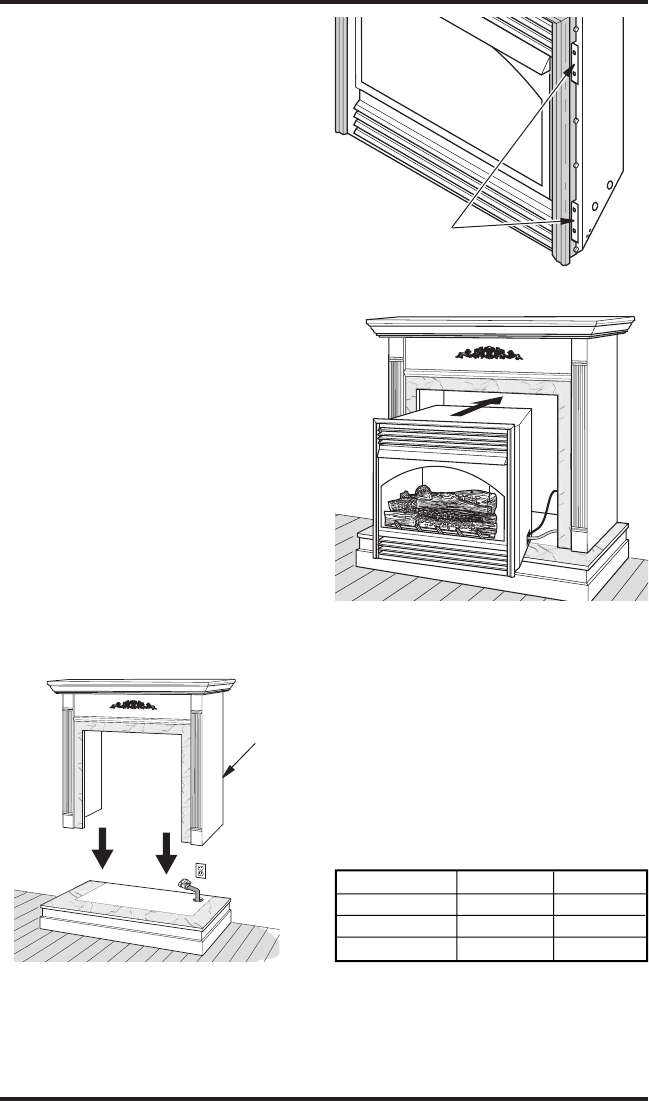
www.desatech.com
107172-01K 11
INSTALLATION
Continued
5. Route flexible gas line through access hole in
hearth base.
6. Center cabinet mantel on hearth base (see
Figure 10). Make sure mantel is flush against
wall.
7. Break off nailing flanges (see Figure 11) with
hammer or pliers.
8. Place cardboard or other protective material
on top of hearth base. Carefully set fireplace
on protective material, with back of fireplace
inside mantel opening.
9. Attach flexible gas line from fireplace gas
regulator to gas supply. See Connecting
Fireplace to Gas Supply
, page 14.
10. If blower is installed, route blower electrical
cord through access holes in either side of
fireplace. Note: Bushing may be moved if
necessary. Plug electrical cord into electrical
outlet.
11. Carefully insert fireplace into cabinet mantel.
Be careful not to scratch or damage hearth base,
cabinet mantel or any laminate trim on hearth
base. Remove protective material from top of
hearth base and from front of fireplace (if any).
Note: You can secure fireplace to hearth or
floor. Open lower louver. Locate screw holes in
bottom of base. Tighten wood screws through
these holes and into hearth or floor.
12. Check all gas connections for leaks. See
Checking Gas Connections, page 15.
Figure 10 - Installing Cabinet Mantel
Figure 12 - Inserting Fireplace Into
Cabinet Mantel
Figure 11 - Location of Nailing Flanges
Cabinet
Mantel
Nailing
Flanges
Actual Framing
Height 32
3
/
8
" 33"
Front Width 34
5
/
16
" 35
1
/
2
"
Depth 16
11
/
16
" 17
3
/
4
"
BUILT-IN FIREPLACE
INSTALLATION
Built-in installation of this fireplace involves
installing fireplace into a framed-in enclosure.
This makes the front of fireplace flush with wall.
If installing a mantel above the fireplace, you must
follow the clearances shown in Figure 16, page
13. Follow the instructions below to install the
fireplace in this manner.


















